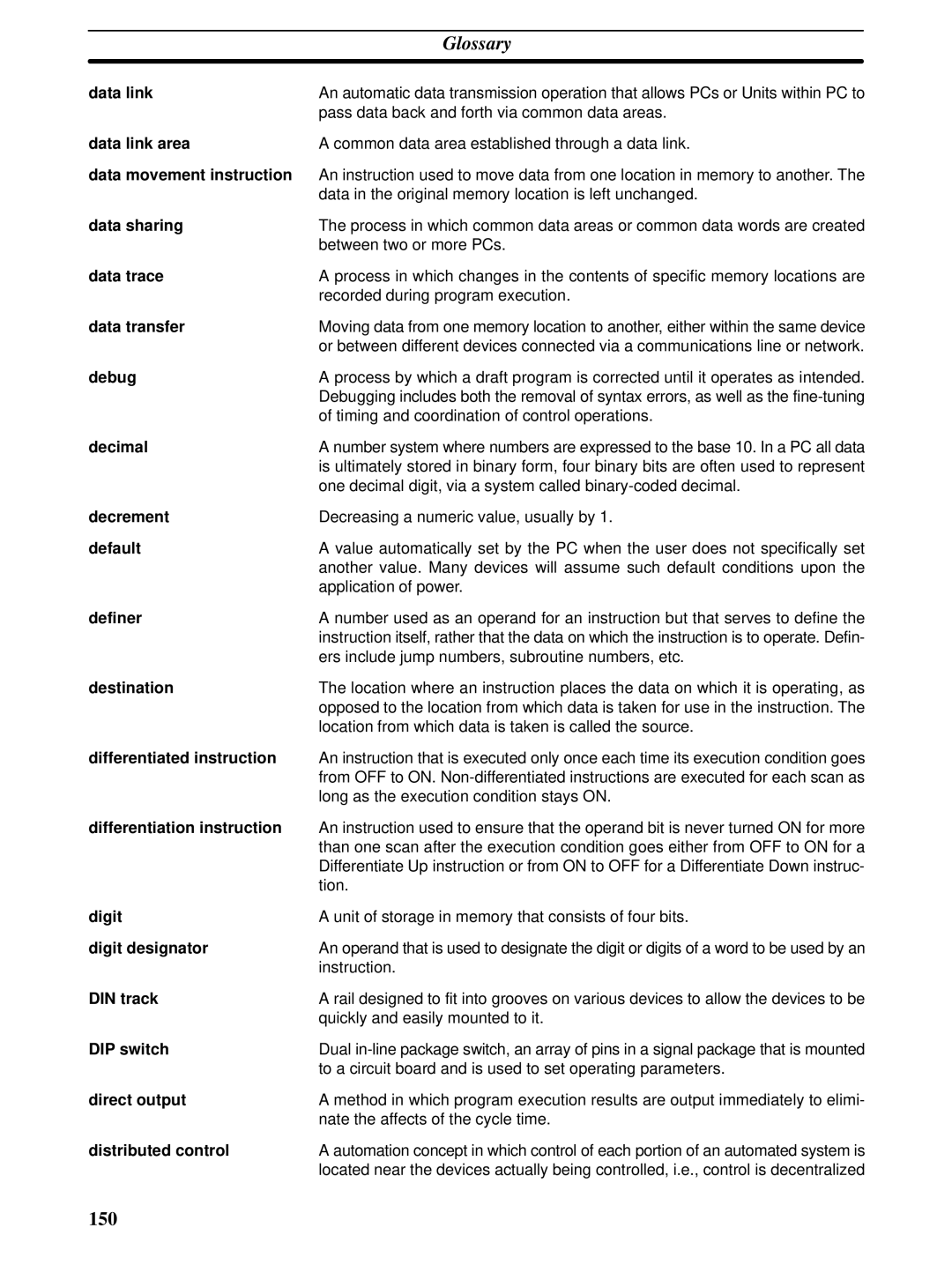| Glossary | |
|
|
|
data link | An automatic data transmission operation that allows PCs or Units within PC to | |
| pass data back and forth via common data areas. | |
data link area | A common data area established through a data link. | |
data movement instruction | An instruction used to move data from one location in memory to another. The | |
| data in the original memory location is left unchanged. | |
data sharing | The process in which common data areas or common data words are created | |
| between two or more PCs. | |
data trace | A process in which changes in the contents of specific memory locations are | |
| recorded during program execution. | |
data transfer | Moving data from one memory location to another, either within the same device | |
| or between different devices connected via a communications line or network. | |
debug | A process by which a draft program is corrected until it operates as intended. | |
| Debugging includes both the removal of syntax errors, as well as the | |
| of timing and coordination of control operations. | |
decimal | A number system where numbers are expressed to the base 10. In a PC all data | |
| is ultimately stored in binary form, four binary bits are often used to represent | |
| one decimal digit, via a system called | |
decrement | Decreasing a numeric value, usually by 1. | |
default | A value automatically set by the PC when the user does not specifically set | |
| another value. Many devices will assume such default conditions upon the | |
| application of power. | |
definer | A number used as an operand for an instruction but that serves to define the | |
| instruction itself, rather that the data on which the instruction is to operate. Defin- | |
| ers include jump numbers, subroutine numbers, etc. | |
destination | The location where an instruction places the data on which it is operating, as | |
| opposed to the location from which data is taken for use in the instruction. The | |
| location from which data is taken is called the source. | |
differentiated instruction | An instruction that is executed only once each time its execution condition goes | |
| from OFF to ON. | |
| long as the execution condition stays ON. | |
differentiation instruction | An instruction used to ensure that the operand bit is never turned ON for more | |
| than one scan after the execution condition goes either from OFF to ON for a | |
| Differentiate Up instruction or from ON to OFF for a Differentiate Down instruc- | |
| tion. | |
digit | A unit of storage in memory that consists of four bits. | |
digit designator | An operand that is used to designate the digit or digits of a word to be used by an | |
| instruction. | |
DIN track | A rail designed to fit into grooves on various devices to allow the devices to be | |
| quickly and easily mounted to it. | |
DIP switch | Dual | |
| to a circuit board and is used to set operating parameters. | |
direct output | A method in which program execution results are output immediately to elimi- | |
| nate the affects of the cycle time. | |
distributed control | A automation concept in which control of each portion of an automated system is | |
| located near the devices actually being controlled, i.e., control is decentralized | |
150
